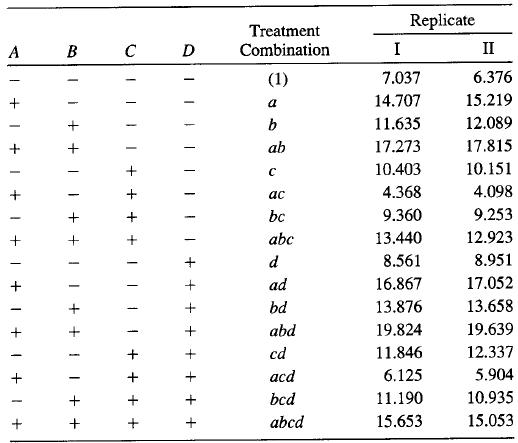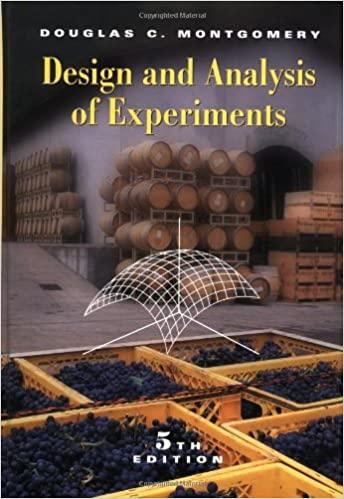One of the variables in the experiment described in Problem 6-15, heat treatment method (C), is a
Question:
One of the variables in the experiment described in Problem 6-15, heat treatment method (C), is a categorical variable. Assume that the remaining factors are continuous.
(a) Write two regression models for predicting crack length, one for each level of the heat treatment method variable. What differences, if any, do you notice in these two equations?
(b) Generate appropriate response surface contour plots for the two regression models in part (a).
(c) What set of conditions would you recommend for the factors A, B, and D if you use heat treatment method C = +?
(d) Repeat part (c) assuming that you wish to use heat treatment method C = -.
Problem 6-15
A nickel-titanium alloy is used to make components for jet turbine aircraft engines. Cracking is a potentially serious problem in the final part, because it can lead to nonrecoverable failure. A test is run at the parts producer to determine the effect of four factors on cracks. The four factors are pouring temperature (A), titanium content (B), heat treatment method (C), and amount of grain refiner used (D). Two replicates of a 24 design are run, and the length of crack (in mm x 10-2) induced in a sample coupon subjected to a standard test is measured. The data are shown in the following table:

Step by Step Answer:






